48+ Types Of Ferns (Indoor, Outdoor, Aquarium) With Photos
In this blog post, we’ll delve into the fascinating world of ferns. Did you know that these lush, green plants have been around for an astonishing 350 million years? Yes, they’ve been thriving on our planet long before any life form existed. One thing that sets ferns apart is their ability to adapt to various environments – from humid tropical forests to dry mountainous regions.
Whether you’re looking to add some greenery to your indoor space or create a lush landscape outdoors, there’s a type of fern that can thrive in your conditions. To help you get started, we’ll explore the different types of ferns available. From compact varieties perfect for indoor containers to sprawling species ideal for outdoor landscaping, there’s something for every gardener and plant enthusiast.
Some popular types of ferns include the Eastern Hay-scented Fern (Dennstaedtia punctilobula), Sensitive Fern (Onoclea sensibilis), and New York Fern (Parathelypteris noveboracensis). But that’s not all – there are many more varieties to discover, each with its unique characteristics and growing requirements. Whether you’re a seasoned gardener or just starting out, this guide will walk you through the process of identifying and caring for your ferns.
From humidity levels to temperature control, soil selection to pruning techniques, we’ll cover everything you need to know to keep your ferns happy and healthy.
How many varieties of ferns are there?
Ferns, a group of non-flowering plants with over 9,000 species, share some commonalities with other plant groups despite their distinct characteristics. One such similarity is the presence of veins, or vascular systems, which transport water and nutrients to various parts of the plant, much like the human body’s circulatory system. This fundamental characteristic allows ferns to thrive in a variety of environments.
In terms of reproduction, ferns require water to produce spores, their primary means of propagation. As such, they are adapted to damp, shaded areas where moisture is readily available. This reliance on water for fertilization means that ferns cannot tolerate dry or hostile conditions, which can put them at risk of extinction. Despite their simplicity as the most primitive plants, ferns exhibit a fascinating reproductive cycle.
They produce spores in various colors – green, yellow, black, brown, orange, and red – each containing DNA for the development of a new fern. The process begins with fertilization, where a sperm swims through water to reach an egg cell, resulting in the formation of a zygote. The newly formed spore will then germinate into a new plant, which remains dependent on its parent until it reaches maturity and becomes independent.
At this point, the parent plant will eventually die off, marking the end of their life cycle.
How do I identify my fern?
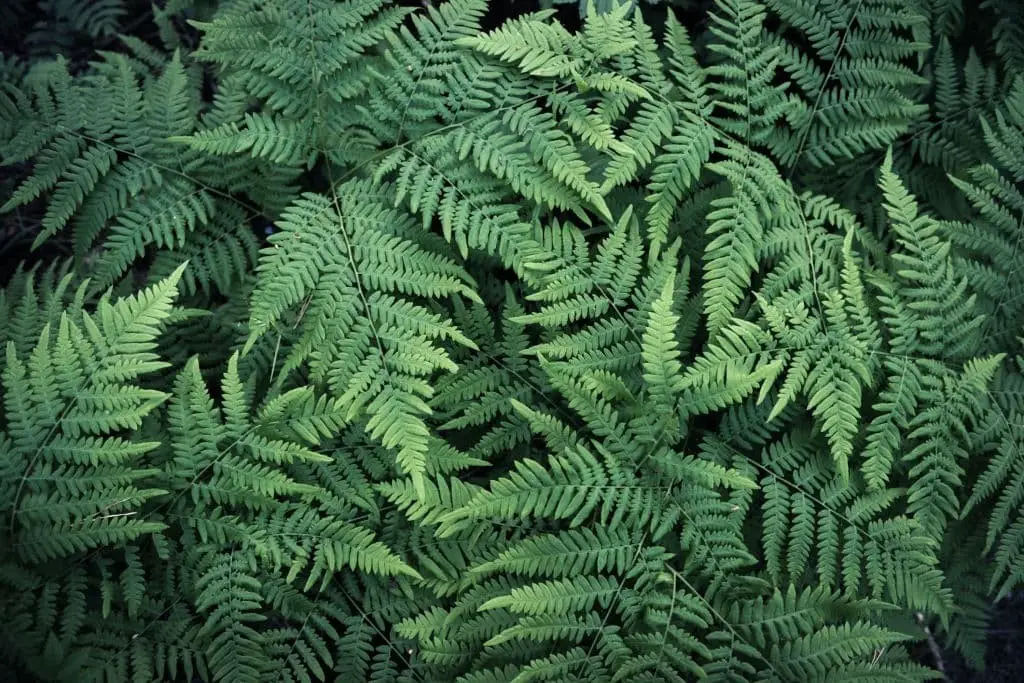
When it comes to selecting a fern for your garden or bathroom, it’s easy to get overwhelmed by the sheer variety of species. However, if you focus on the unique characteristics of each zone of growth, identifying your favorite fern becomes much simpler. To start, consider the following key factors: the stem structure, leaf shape and arrangement, and the location of spores. By examining these features, you can narrow down the options and find the perfect fern for your space.
Some popular species to look out for include Staghorn, Maidenhair, Boston, Holly, Bird’s Nest, Cinnamon, Asparagus, and Australian ferns.
Short Ferns for the Landscape: Grow Under Two Feet Tall
Incorporating ferns into your landscape design can add a touch of elegance and whimsy. When it comes to selecting varieties, there are many options available. Here, we’ll take a closer look at three species of ferns that remain compact, reaching heights of under two feet. These diminutive plants are perfect for filling in bare spots or adding texture to garden beds beneath trees.
Despite their delicate appearance, these ferns are surprisingly easy to care for and will make a statement in your outdoor space.
Eastern Hay-scented Fern (Dennstaedtia punctilobula)
The Eastern Hay-scented Fern (Dennstaedtia punctilobula) boasts a distinct appearance that sets it apart from other varieties. This evergreen species can grow up to 18 inches tall and expand to a width of approximately two feet. One of its most distinctive features is the unique scent, reminiscent of freshly cut hay. In terms of visual appeal, the fern’s lacy foliage and bright green fronds create a striking display.
While it may not produce showy blooms, the Eastern Hay-scented Fern still manages to impress with its subtle charm. For optimal growth, it prefers partial to full shade and soil with a slightly acidic pH. If propagation is desired, simply split the rhizomes to encourage new growth.
Sensitive Fern (Onoclea sensibilis)
The Sensitive Fern (Onoclea sensibilis) is a striking plant that can grow up to 23 inches tall and spread just as wide. Its adaptable nature makes it an excellent choice for those who want a low-maintenance fern. Despite its name, this hardy plant thrives in a variety of conditions, but it does have one peculiarity – the fronds wither upon exposure to frost. This unique trait earned it the nickname ‘sensitive.
‘ In terms of ideal growing conditions, the Sensitive Fern prefers full sun to partial shade and slightly acidic soil. When it comes time to propagate this fern, rhizome division is necessary, preferably in the spring when the plant is most active.
New York Fern (Parathelypteris noveboracensis)
The New York Fern (Thelypteris noveboracensis) is a striking addition to any landscape, reaching two feet tall and spreading just as wide. This slow-growing fern has an advantage over others in its ease of transplanting. Its delicate, gently tapered fronds are typically found in moist, wooded environments and add a touch of subtlety to the garden. One of the deer-resistant ferns on the market, it thrives in partial shade and slightly acidic soil, though it can also handle neutral pH conditions.
To multiply this fern, simply separate the root ball when dividing. With these three selections, you’ll create distinct focal points in your landscape that draw the eye to the intricate beauty of a fern. They’re perfect for filling gaps between plants, allowing foliage to complement nearby flowers or decorative features.
14 Types of Outdoor Ferns:
Unlike most plants, ferns rely on spores found in their leaves for propagation rather than seeds or stem cuttings. With a solid grasp of their care requirements, growing them outdoors becomes a straightforward process. Here are some species of outdoor ferns that can bring a rich, emerald hue to your garden’s landscape.
Himalayan maidenhair fern (Adiantum venustum):
This unique evergreen fern boasts broad, triangle-shaped fronds featuring small, fan-like segments. As it reaches its peak in late winter and throughout spring, the frond’s color transforms from subtle orange hues to a deep green. Its creeping habit makes it an ideal choice for shade gardens and underplanting.
Identifying this species is relatively straightforward:
Delicate light green fronds measuring 22-38 cm tall, as noted by Gardeners’ World. com.
One key characteristic that sets it apart from other ferns is its evergreen leaves.
Tip: When cultivating these ferns, be sure to provide them with sufficient protection from strong winds.
Hart’s-tongue fern (Asplenium scolopendrium):
This striking fern boasts rosette-like, arching fronds in dark green hues with distinctive brown stripes on their undersides. Its undivided frond appearance sets it apart from others. This hardy variety remains lush and vibrant year-round, even during the winter months when many other plants may be dormant.
Identification is straightforward:
• Always-green evergreen foliage, never fading or browning.
• A mature plant typically reaches 45-60 cm in height (according to Gardeners’ World. com).
• Its fronds are glossy and sturdy.
Tip: When incorporating this fern into your garden, be prepared to dedicate time for regular grooming during the spring season.
Hart’s-tongue fern (Asplenium scolopendrium):
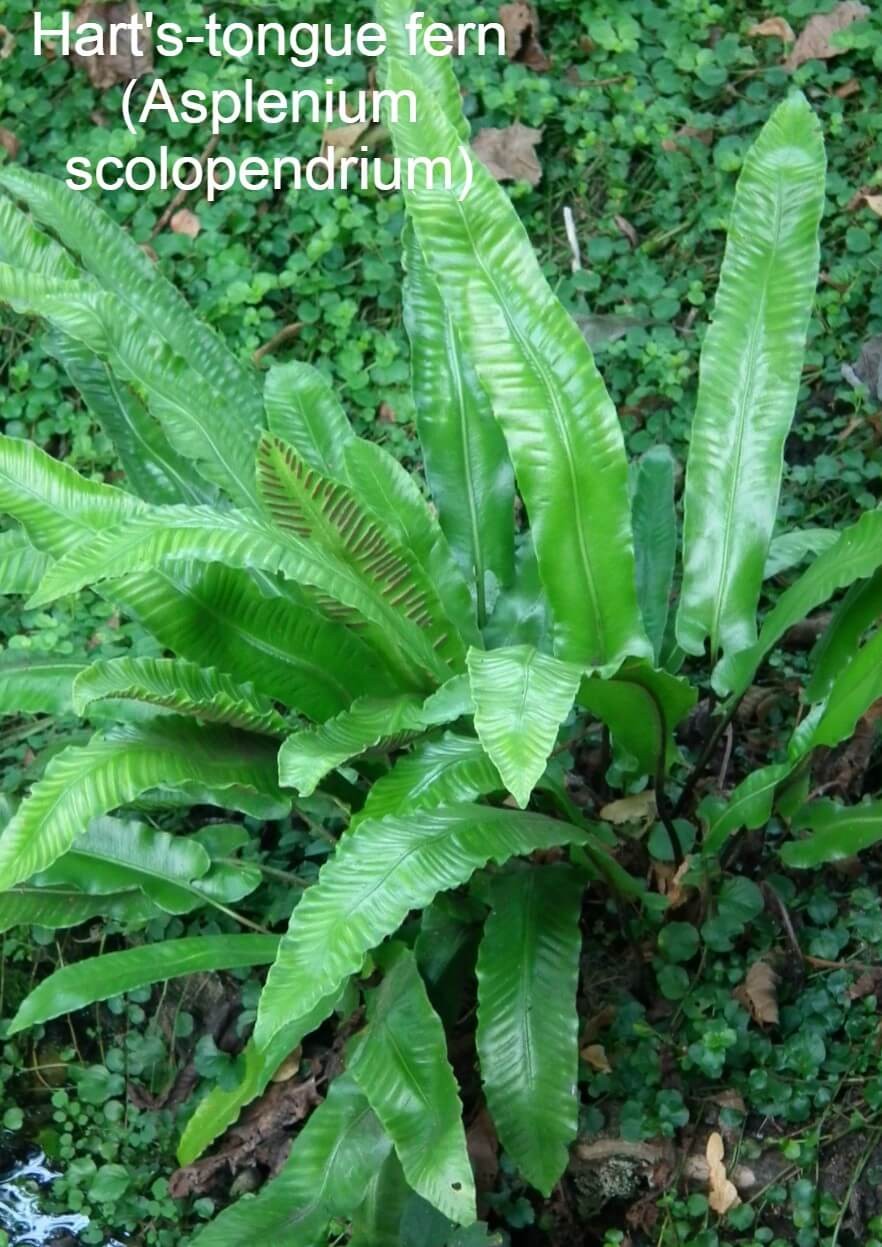
The crested fern group is characterized by its clustered growth pattern, including the aforementioned type. At a glance, they bear a resemblance to water crests or latticework due to their heavily fringed edges. These plants thrive in alkaline soils and low-light conditions, making them an ideal choice for pavements and walkways.
To identify these ferns, look out for the following characteristics:
* Evergreen plants with a consistent appearance throughout the year.
* Young fronds exhibit distinctive wavy edges that add to their charm.
* They typically grow between 30-60 cm in height.
A tip for garden enthusiasts: it’s the crinkled leaves and wavy texture that make these ferns so visually appealing, making them a great addition to your outdoor décor.
Deciduous painted Japanese fern (Athyrium niponicum):
The variegated fern boasts a unique charm that sets it apart from other tropical plants. Its striking features include silver-gray-green foliage and purple veins, which give it an air of whimsy. The addition of its upward-arching, triangular fronds only adds to its captivating appearance. To identify this rare find, look for delicate silver and burgundy fronds that grow prostrate, never upright, reaching a height of 30-38cm.
When choosing these ferns, prioritize their attractive silver fronds, ensuring the plant receives adequate moisture to thrive in your care (Gardeners’ World. com).
Autumn Fern/Dryopteris erythrosora:
The Autumn Fern gets its name from the copper-red and gold hues of its young fronds, reminiscent of autumn’s vibrant colors. Its papery appearance is striking, especially during spring when it reaches its growing season. As the seasons progress into summer, the fern’s color gradually transitions to a deep green. Notably, this species can thrive in colder regions, making it an attractive option for cultivators and gardeners alike.
In fact, it’s often used as a popular cross-planting variety, including the sought-after ‘Brilliance’ cultivar.
To identify an Autumn Fern:
* Observe the red new growth that emerges in spring, which eventually turns bronze before settling into a lush green hue.
* Note that it’s an evergreen plant, retaining its foliage year-round.
* Be aware of the fern’s relatively compact height, typically reaching no more than 60cm tall.
The alpine wood fern (Dryopteris wallichiana):
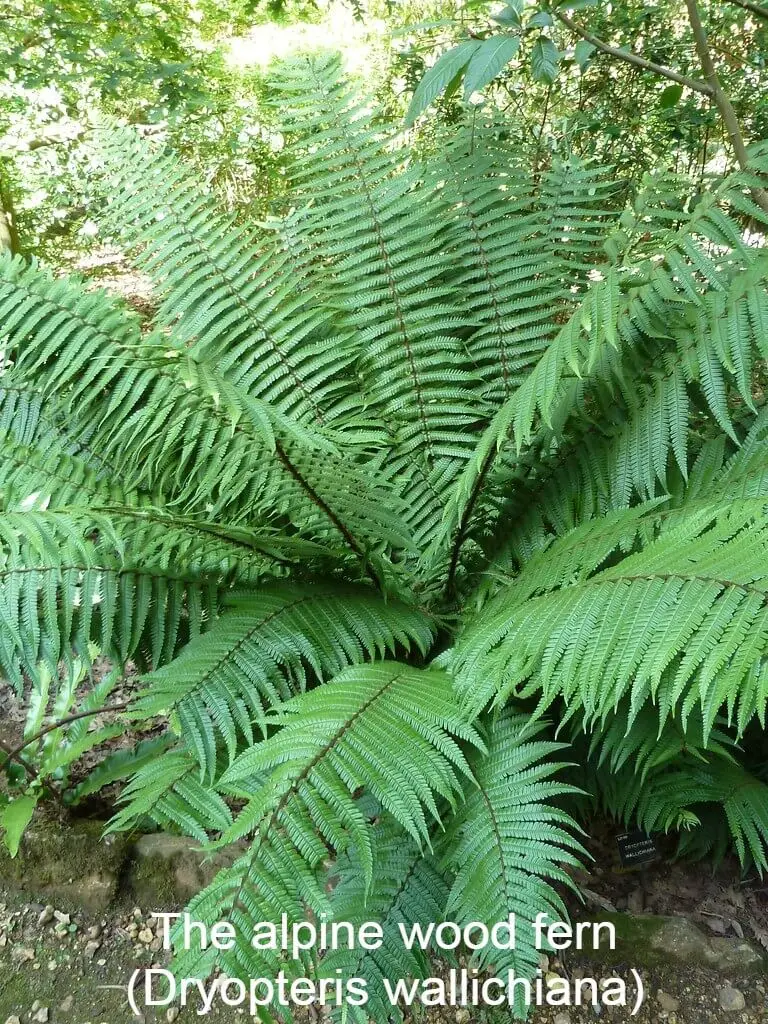
This unique semi-evergreen fern is indigenous to India and China, boasting lancing fronds that emerge from an upright rhizome. Its growth habit is quite distinctive, forming bulky tufts reminiscent of a shuttlecock. As the seasons change, its fronds transition from a bright yellow in the spring to a darker hue with stems and midribs taking on a brown-black color. Notably, this species is winter-hardy, capable of withstanding frost and remaining a viable outdoor option.
In fact, as the winter deepens, the foliage takes on an even deeper green tone. At maturity, it can produce at least 60 fronds annually. To identify this fern, look for fronds that reach up to 90 cm in height. It’s essential to provide sufficient spacing for these tall fronds, and consider planting them in groups throughout your compound.
The Shuttlecock fern/Ostrich fern (Matteuccia struthiopteris):
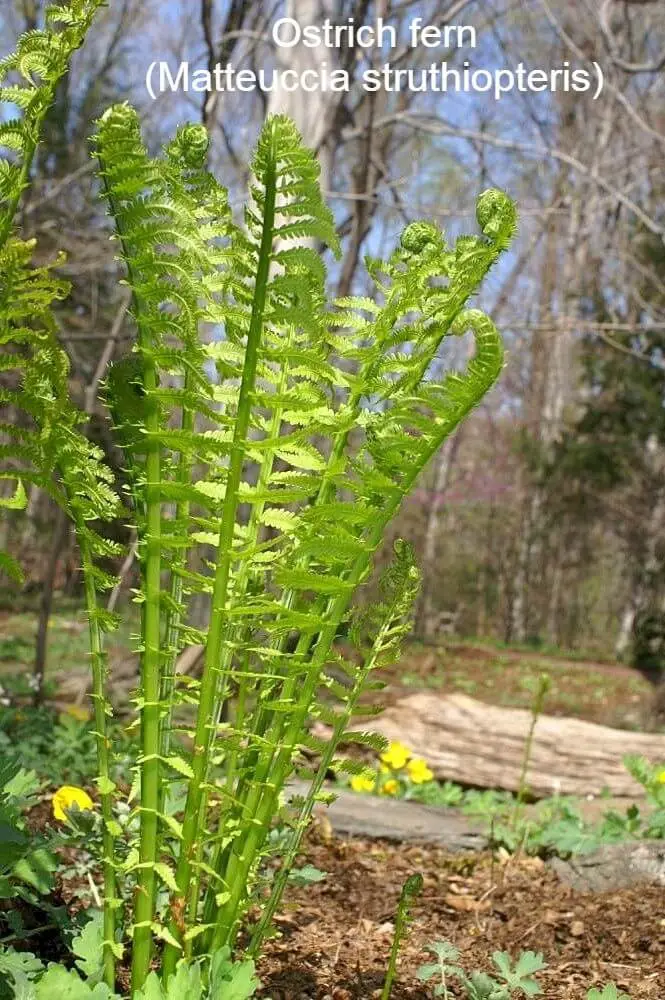
The Ostrich Fern is a striking plant that boasts lancing fronds reaching up to five feet in length, forming dense masses of compact fronds reminiscent of vases. Its ability to thrive in low-light conditions and shady spots sets it apart from other fern varieties. Watering requirements are surprisingly infrequent, with the added nuance that moisture should be directed towards the base when necessary. One of its most notable features is its bright green fronds, which can grow up to 1.
5 meters tall.
As an added bonus, this fern has a unique charm during early spring, becoming a ‘handsome plant’ in the garden. To coax optimal growth, humid conditions and moist soil are essential, as per expert advice from Gardeners’ World. com.
Carrot fern (Onychium japonicum):
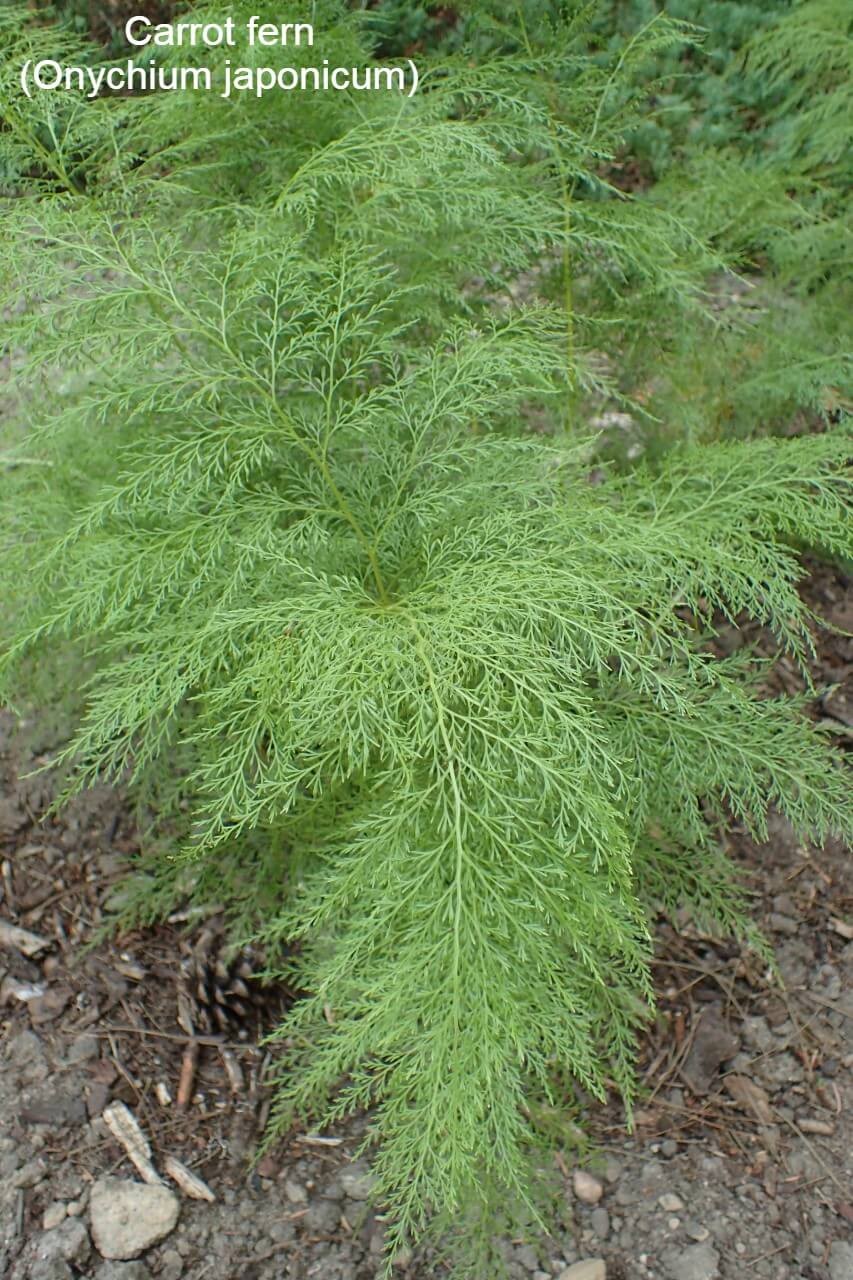
The Carrot Top Fern, native to Japan and Asia, boasts a unique appearance with carrot-like fronds featuring a lacy texture and dark green hues. This adaptable plant can thrive in a range of conditions, from full sun to full shade, making it an ideal choice for outdoor use as ground cover or underplanting. Its wiry stems typically reach 2ft in length, but can be containerized and brought indoors during the spring months.
The name ‘Carrot Top’ is derived from the plant’s foliage, which resembles carrot tops. When identifying this species, look for finer fronds that reach 10-45 cm in height. For optimal growth, consider relocating your Carrot Top Fern to an unheated greenhouse during the winter months.
Royal Fern (Osmunda regalis):
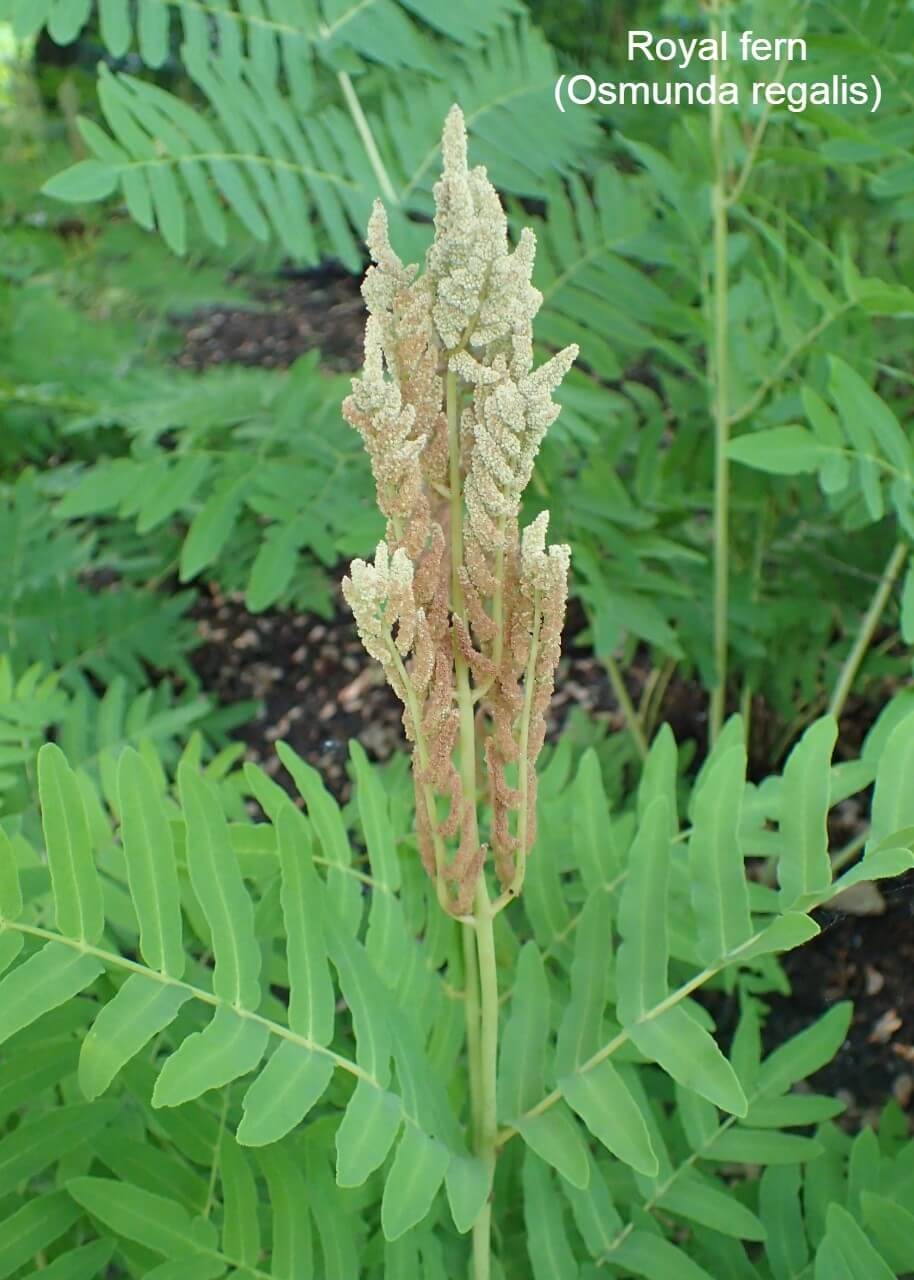
The European fern is renowned for its impressive size and ease of cultivation indoors. Measuring 5 feet in height and 2 inches wide, it’s a striking addition to any space. One of the unique features of this fern is its compact leaflet structure, comprising 13 pairs at an astonishing 3 feet long. While it thrives in acidic, damp environments with partial shade, its mature size can make it more suitable for outdoor cultivation than indoor.
To distinguish this species, look out for key characteristics such as deciduous foliage that turns bronze during autumn, pale green fronds, and a maximum height of approximately 1.5 meters.
Japanese tassel fern (Polystichum polyblepharum):

While tassel ferns may not burst forth with rapid growth, they more than make up for it once mature. Characterized by their medium-length, arching fronds, these evergreen plants are a delight to behold. The name ‘tassel fern’ stems from the unique appearance of immature fronds, which dangle like tassels before gradually straightening out into elegant arches.
As such, they prove an excellent choice for complementing ground cover beneath Japanese weeping maples – their compact height of 45-60 cm ensuring a harmonious juxtaposition. Moreover, tassel ferns are known for their hardiness and ease of cultivation in gardens, making them a wonderful addition to any outdoor space.
Maidenhair fern (Adiantum):
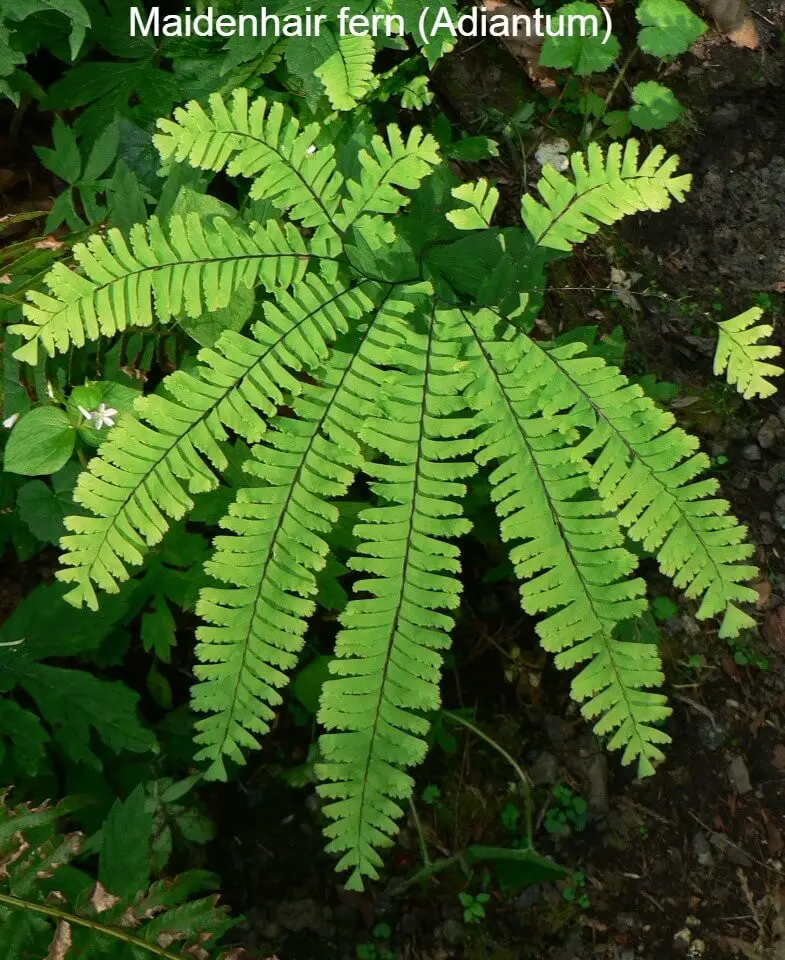
The world of ferns is a diverse one, encompassing approximately 250 species that can be found on every continent. Native to woodlands, these tropical garden staples thrive in environments with the right conditions. Notably, they are characterized by their vibrant green, glossy foliage that reaches its peak during the spring season.
The purple-red and black stalks that emerge add an extra layer of visual interest, while the young fronds’ striking contrast between green and pink is a delightful bonus. With a tolerance for mild frost, these ferns can be enjoyed year-round. One of their defining features is their compact stature, which sets them apart from other outdoor fern species. Like many of their fellow ferns, they reproduce using spores, making them an intriguing addition to any garden or indoor space.
Whisk Fern (Psilotum nudum):
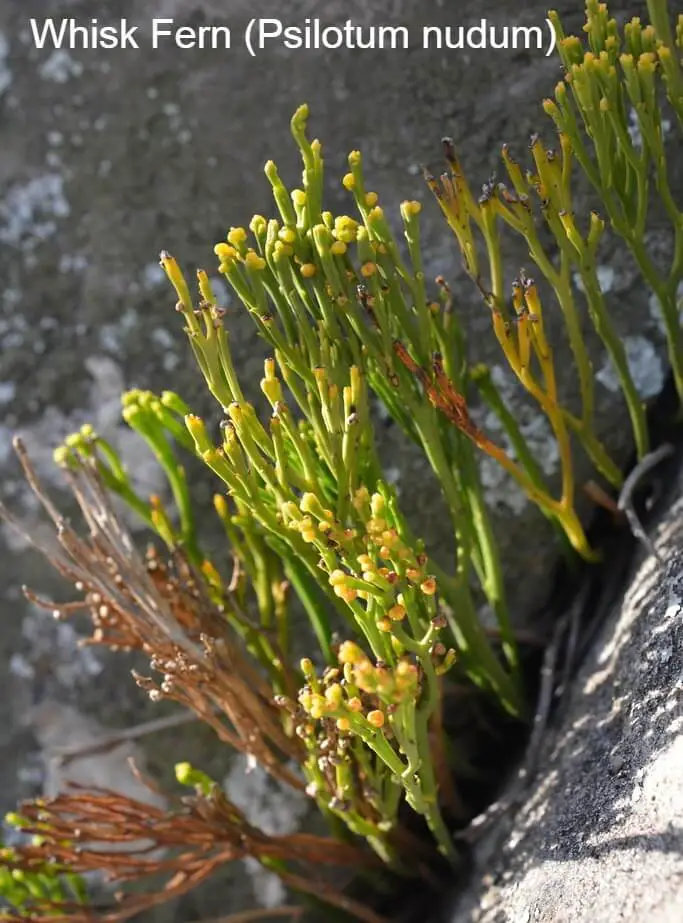
In various regions across Africa, Oceania, Asia, and the Americas, this distinctive fern species has evolved. While it’s particularly well-known in Japan, its natural habitats are diverse and widespread. This fern stands out for its slender stems that resemble chicken feet, as well as a compact growth habit that will give it an egg whisker-like appearance when mature. It thrives in areas with rocks and prefers warm, humid climates accompanied by moist soils.
Key identifying characteristics include:
– Slim, chicken foot-like stems that set it apart from other ferns;
– The absence of vascular organs, which serves as a distinguishing factor;
– Unique thin stems that are unlike those found in other fern species.
Licorice fern (Polypodium glycyrrhiza):
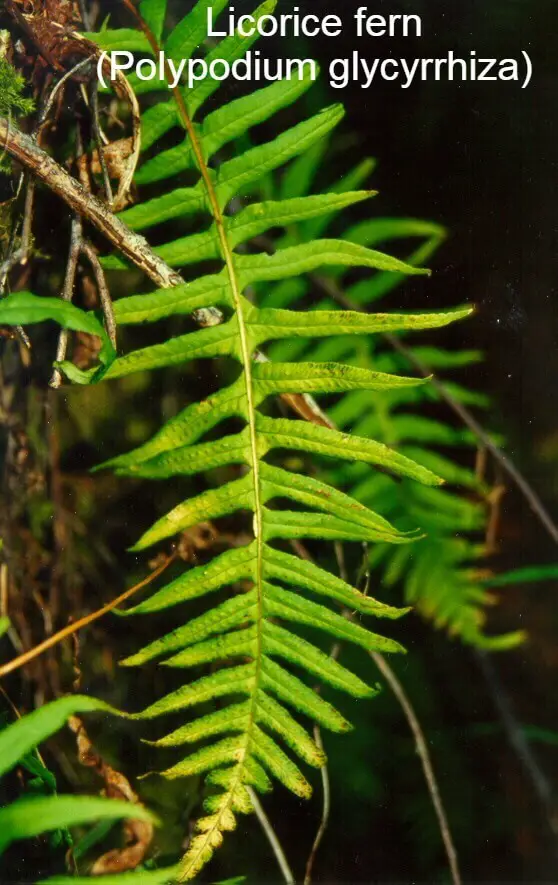
This species of plant is commonly found growing on the bark of forest trees. Its subterranean stems have a distinctive licorice flavor and aroma, which is used in traditional medicine to treat colds, coughs, and sore throats. Native to North America, this plant has been utilized for centuries as an herbal remedy. The dried stems are used to make tea, while the raw stems can be consumed as a snack. It thrives in tropical climates with high humidity.
When it comes to identifying this species, look for its unique characteristics: when chewed, the stem acts as a natural medicine for soothing coughs and sore throats. They typically inhabit rocky or wooden surfaces. Additionally, the stems can be used to brew tea that has a rich licorice flavor. For optimal growth at home, it’s essential to provide this plant with a mild temperature environment.
Eagle fern (Pteridium aquilinum):
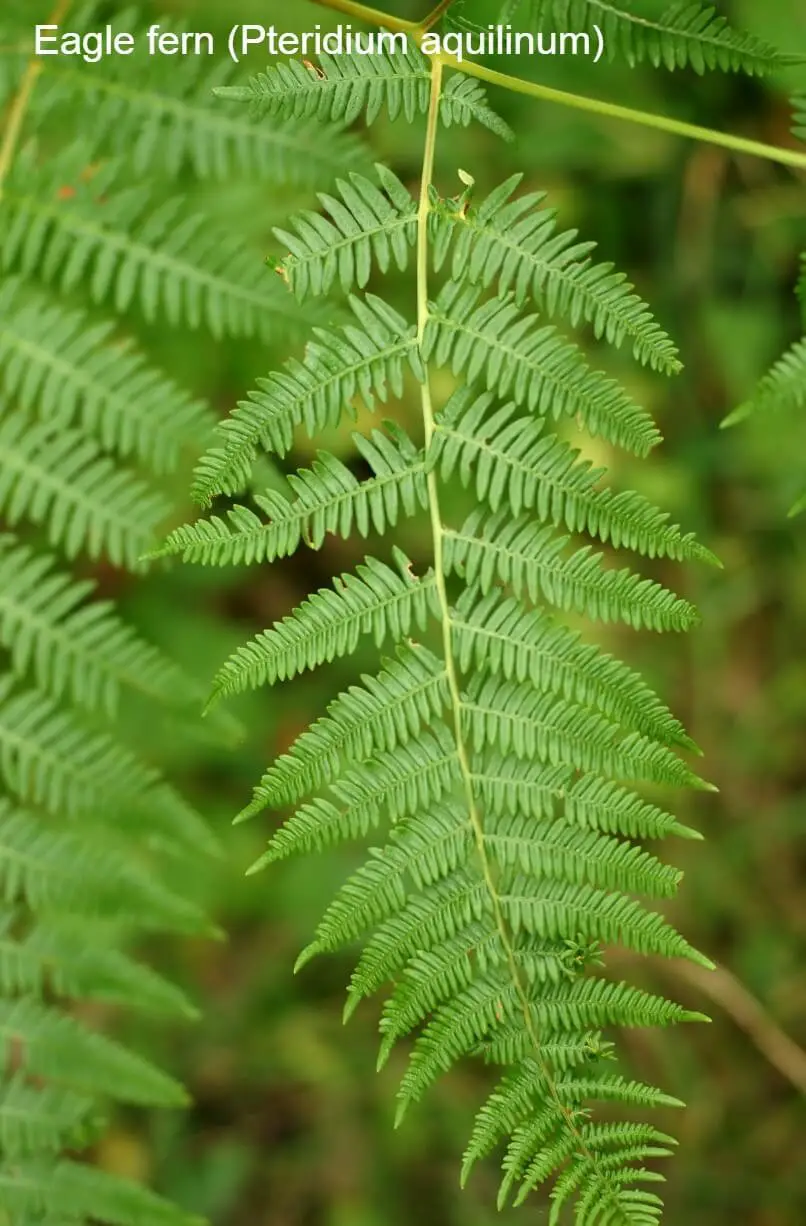
The Eastern Bracken fern, also known as the triangle-shaped stem fern, is a highly adaptable plant that can thrive in a variety of environments. While it’s capable of spreading quickly and can be considered invasive if left unchecked, its unique triangular stems make it an easily identifiable species. In addition to its striking appearance, this fern has also been utilized as a food ingredient – dried and stir-fried forms are edible.
When cultivating the Eastern Bracken fern, it’s best to grow it in subtropical or temperate climates with poor soil conditions, where it can truly flourish.
Chinese Ladder Brake (Pteris vittata):

The Asian and Australian native fern is a pantropical species that thrives in valleys and riverbanks, showcasing deep green foliage with neatly aligned spores along the pinnae. Although it provides effective erosion control, it can become invasive if left unchecked.
Its unique features make it a popular choice for industrial design, particularly in concrete infrastructure projects.
When identifying this fern, look out for its distinctive triangular leaves and discover them growing on limestone formations or nestled between brick walls.
Giant fern (Angiopteris evecta):

The majestic king fern, touted as the world’s tallest and largest tree fern, boasts fronds that can stretch up to 20ft in length and 5ft in width. Its slender stems, remarkably, only grow to a height of 3ft, making it an ideal addition to outdoor tropical gardens. To establish strong roots, maintaining adequate moisture is crucial. This remarkable plant can thrive in environments ranging from full sun to complete shade.
When cultivating the king fern, provide it with a warm environment, moist soil, and limited shade, allowing it to flourish. It’s worth noting that this species is highly adaptable to various conditions and has even been known to become invasive in some areas. In addition, its survival depends entirely on human conservation efforts, as its spores are not dependent on environmental growth.
Man fern (Dicksonia antarctica):
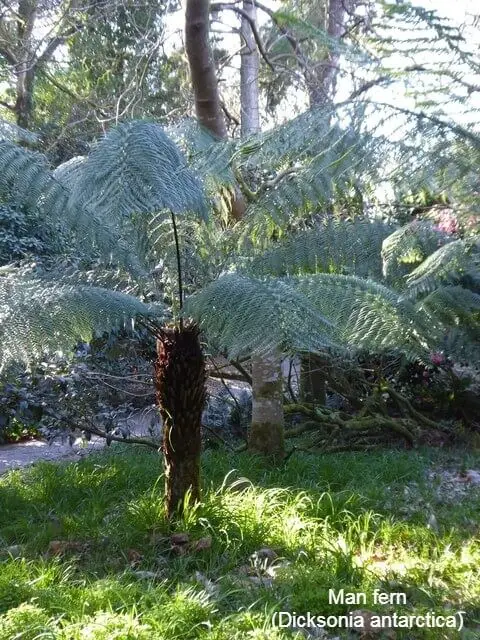
The soft tree fern, also known as a dark evergreen, is a cold-hardy species notable for its robust yet upright rhizome covered in thick, fibrous roots. Above this base, the plant’s divided fronds form a striking rosette pattern. The dark green leaves have a waxy texture and are particularly eye-catching during the spring season. Native to Tasmania in Australia, the soft tree fern can grow up to four meters tall.
One of its distinctive features is the presence of decayed remains from previous growth, which make up the trunk-like structure. In terms of size, the largest specimens can reach a height of 49 feet, while smaller ones typically top out at around 15-16 feet. Notably, this plant thrives in a range of soil conditions, including dry, alkaline, and acidic environments.
Silver fern (Cyathea dealbata):
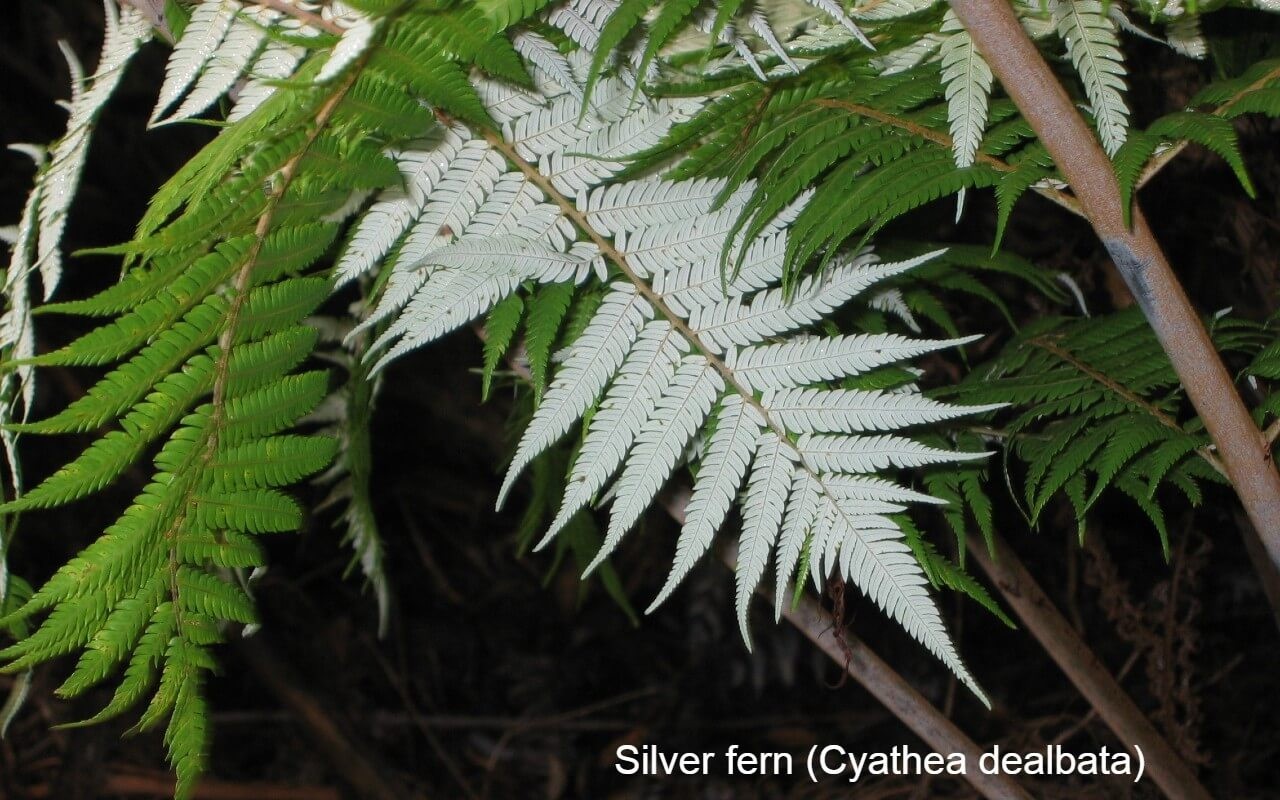
The silver fern, a symbol of New Zealand, is characterized by its striking dark green foliage with iridescent silver undersides. This unique species thrives in subcanopy forests with moist, humus soils during its youth, but can adapt to less humid conditions as it matures. To identify the silver fern, look for it in the same subcanopy forests where you’d find wet and dry conditions. A handy tip: the silvery leaves serve as natural pathways at night, providing a beacon for navigation.
Consider replicating this concept in your own garden by incorporating similar visual cues.
Tasmanian cup fern (Cyathea arborea):
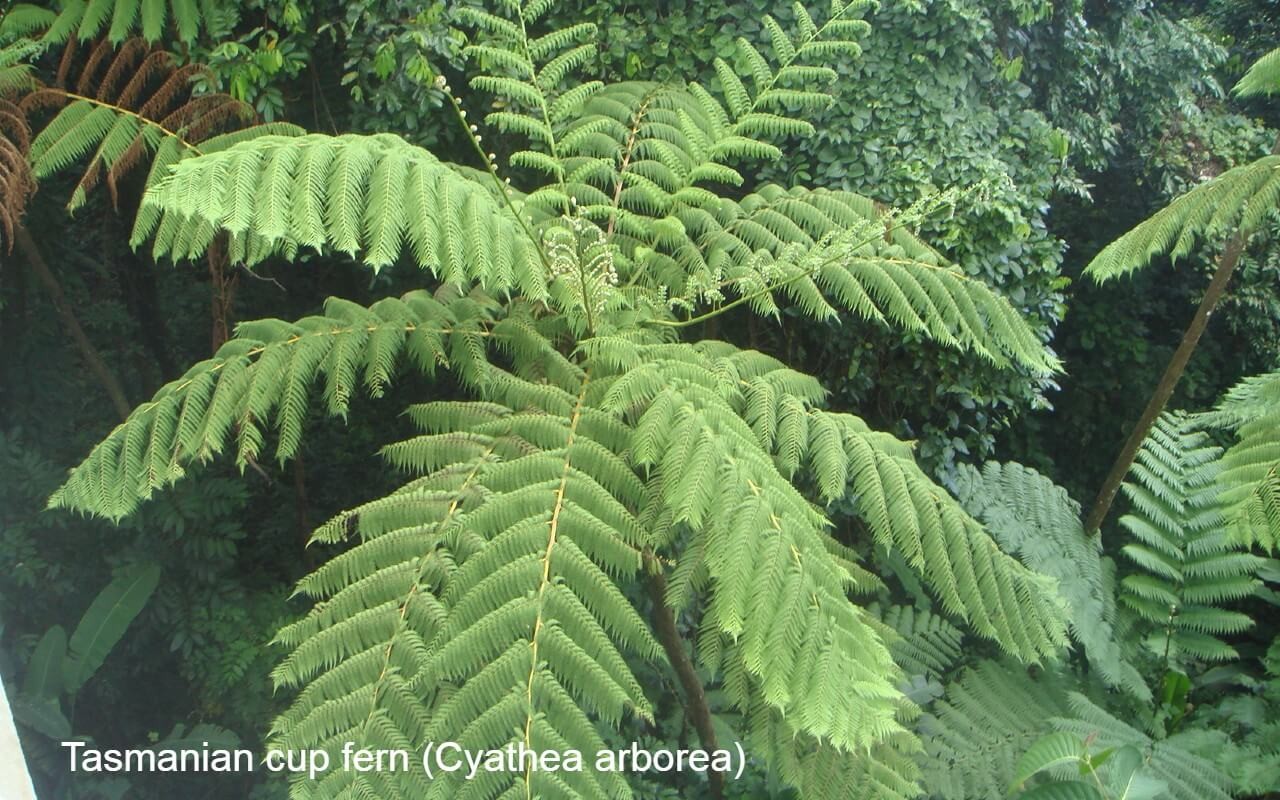
The Tasmanian cup fern, an evergreen species, has the potential to reach heights of over 9 meters. Its unbranched stems support fronds that can grow up to 3 meters in length. Native to Asia, Africa, and South America, this ornamental tree is often cultivated and harvested for its aesthetic value. It can be found growing naturally in roadside banks, woodland gardens, and even thrives when transplanted indoors.
When it comes to identifying the Tasmanian cup fern, a few key characteristics come into play: first, it typically reaches a height of 27 feet; secondly, its trunk is hard on the outside but soft on the inside, measuring between 3-5 inches in thickness; finally, young plants display a rolled trunk, setting them apart from their mature counterparts.
Types of Indoor Ferns:
Ferns have a unique charm with their lacy fronds that evoke an exotic and refined sense of elegance. However, their care requirements can be notoriously finicky, as each species has its own distinct needs. If you’re considering bringing one of these enigmatic plants into your home, here are some popular indoor fern options to explore.
Austral Gem Bird’s Nest fern (Asplenium dimorphum x difforme):
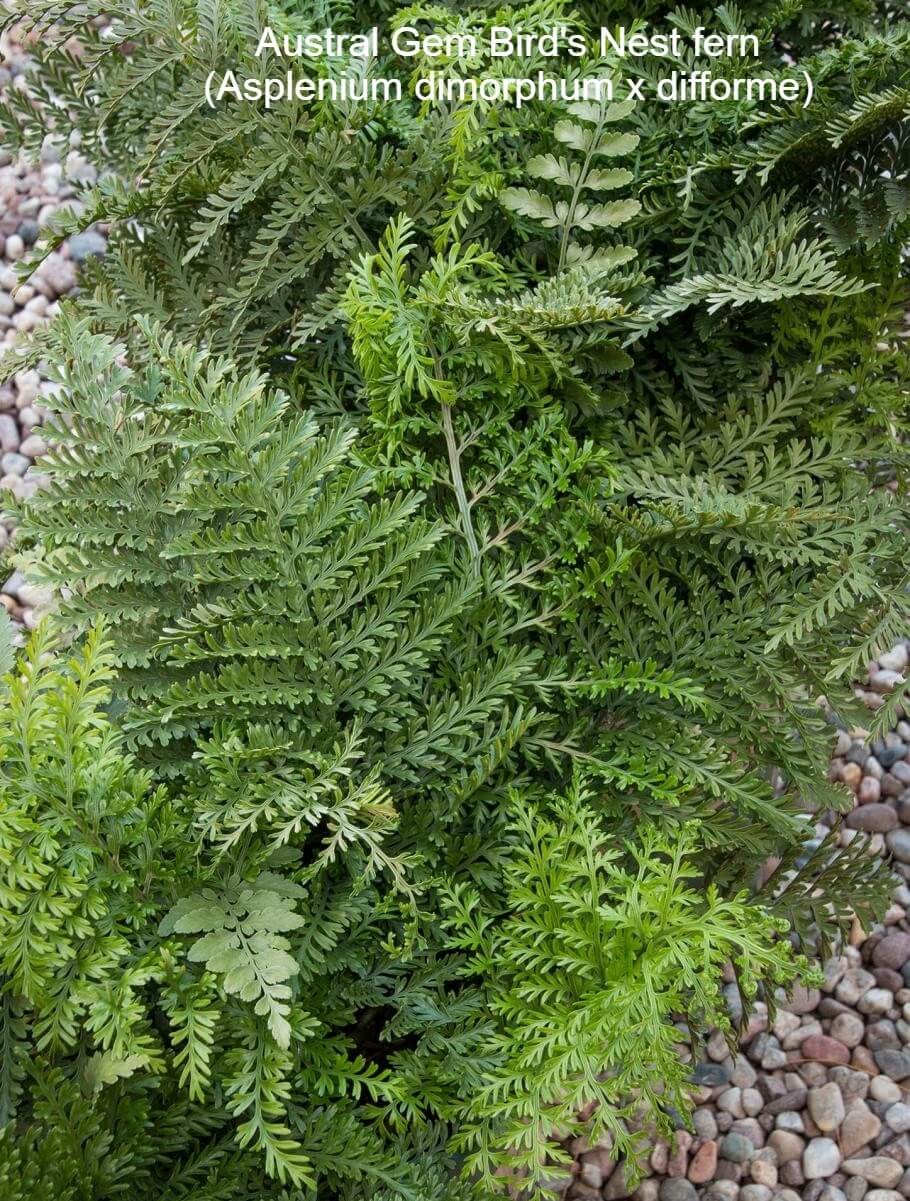
The Maidenhair Fern is a unique and striking plant, characterized by its large, deep green fronds with jagged edges. While it thrives in moist environments and can grow well outdoors in rainy and damp conditions, it’s also surprisingly adaptable to indoor spaces with low light. Its name stems from its natural affinity for growing among tree roots, rocks, and moist soils in warm climates.
This fern is identified by its distinctive features, including spear-shaped fronds, brown and wavy leaves that reach up to 2ft in length, and a naturally rooted habit when found in tropical regions. When cultivated indoors, this plant requires moderate temperatures between 13-24°C and high humidity. As an added bonus, the Maidenhair Fern is non-toxic to pets, making it a great choice for pet owners.
In terms of care, mature plants will require more space and attention, but their large leaflets can add a touch of elegance to any room or outdoor space.
Boston fern (Nephrolepis exaltata):
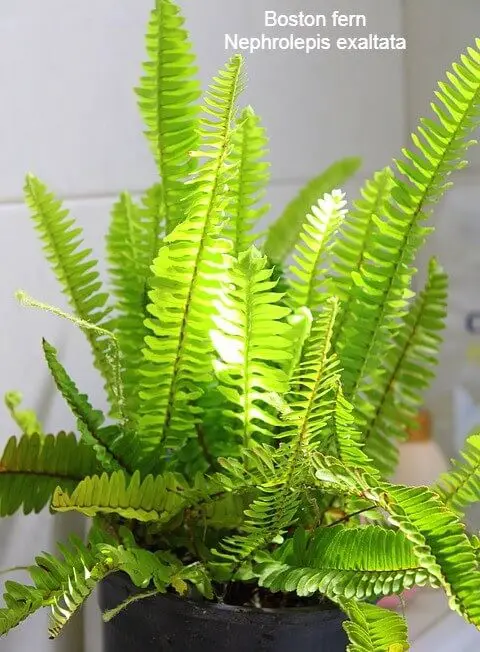
The Boston fern (Nephrolepis exaltata) is a popular choice among houseplant enthusiasts due to its unique characteristics and relatively low maintenance requirements. To thrive, this plant needs bright, indirect light, high humidity, and moist, well-draining soil. One key consideration is that it’s sensitive to fertilizer, so avoid using any – instead, focus on providing the right environment for optimal growth.
The Boston fern prefers warmer temperatures, typically ranging from 13°C to 24°C (55°F to 75°F). When it comes to identifying this plant, look for its distinctive features: long fronds reaching up to 3 feet in length, with tough leaf stalks that can support multiple leaves arranged sideways. The pinnate leaflets add a touch of elegance to the overall appearance. As a bonus, Boston ferns are non-toxic to pets, making them a safe addition to your home.
If you’re considering bringing one into your space, consider displaying it in a hanging basket to allow its long fronds to cascade downwards. When mature, you can transfer it to a pot. For young plants, placing them near a window opening in a pot is a great way to provide the necessary light and humidity. To keep your Boston fern’s fronds looking their best, try adding Epsom salts to the plant when the color starts to fade.
Finally, if you’re looking for a spot with ideal conditions, consider placing your Boston fern in a bathroom, where the high humidity will help it thrive.
Cretan brake fern/Ribbon fern (Pteris cretica):

The Boston fern is characterized by its long, sword-like leaves that feature a striking contrast between their pale green centers and deep green edges. This bushy fern thrives in environments where it can grow unchecked, making it an excellent choice for indoor spaces. It excels in tropical climates with ample shade, where the temperature ranges from 13-24 degrees Celsius. To identify this species, look for plants that reach heights of 1 to 2.
5 feet and exhibit fronds in various shapes and colors. Closer inspection will reveal broad or slim green leaflets with pale centers. To keep your Boston fern healthy, it’s essential to prune any dying fronds and repot the young plant as it matures, moving it to a larger pot to accommodate its growth.
Delta Maidenhair ferns (Adiantum raddianum):

The Adiantum genus is home to a diverse range of species, each with its unique characteristics. One such species is particularly striking for its waxy, branching fronds and purple-black stalks that thrive in coastal regions. To successfully cultivate this delicate plant, it’s essential to replicate the conditions found in its natural habitat. This includes providing bright, indirect light and maintaining high humidity levels.
To identify this Adiantum species, look out for the following distinguishing features:* A slender growth habit reaching up to 1.5 feet tall* Consistent watering is crucial, as the plant requires a steady supply of moisture* Triangular-shaped fronds with small, pinnate leaves that are light green in color* Black, wiry stalks that provide support and maintain an upright posture for the plant* A temperature range of 13 to 24 degrees Celsius is ideal for optimal growth
Rabbit’s foot fern (Davallia fejeensis):
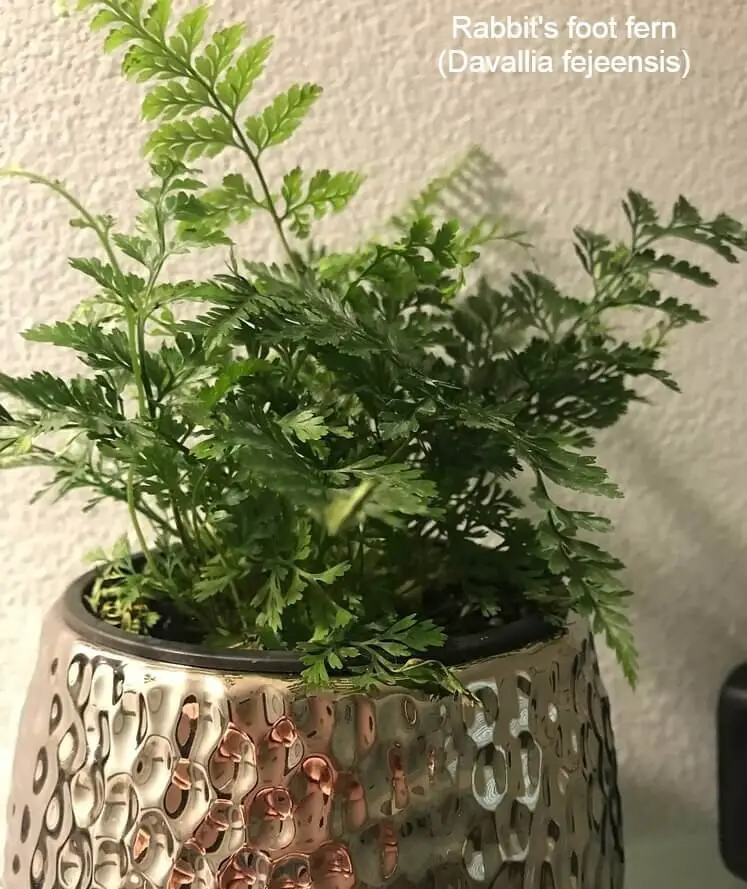
The Boston fern’s enduring popularity stems from its low-maintenance nature and stunning visual appeal when displayed in hanging baskets. Its unique, wire-like appearance and trailing habit make it an attractive addition to any room. The plant’s exotic charm is further enhanced by its triangular arrangement of fronds, which bears a resemblance to rabbit feet.
For those looking to identify this beautiful fern, look for the following characteristics:A compact growth habit, reaching heights of 1-2 ft. Temperatures ranging from 15-24°C (55-75°F) are ideal. Its small, upright fronds grow on wiry stalks, featuring delicate lace-like leaflets. In its natural habitat, you can find the Boston fern growing on trees or rock crevices. To keep your plant thriving, be sure to use a well-draining potting mix and provide adequate humidity.
Regular repotting during the spring is also recommended.
Asparagus Fern (Asparagus aethiopicus):
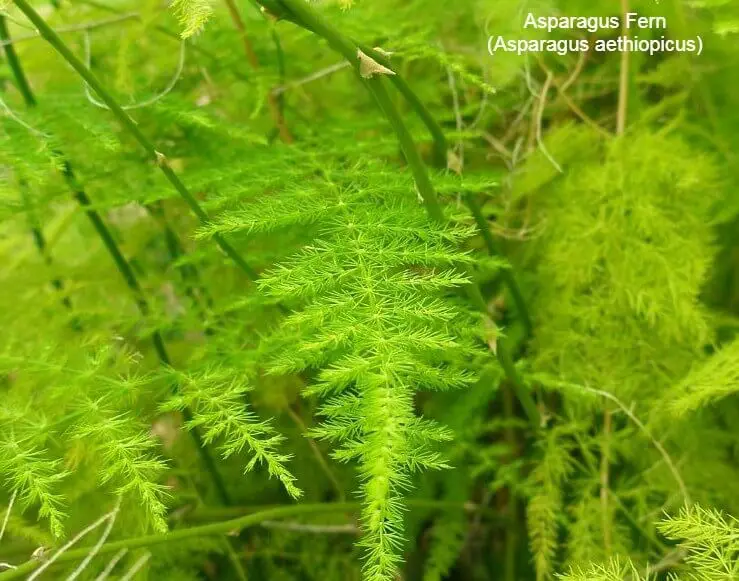
The most prevalent type of asparagus fern is characterized by its fine, compact, needle-like leaves that are actually a skin irritant. This variety can be invasive if left unchecked, so regular pruning is necessary. Like other ferns, it thrives in bright, indirect light. To keep this plant happy and healthy, make sure to provide it with plenty of humidity – either by placing it in a humid area or using a pebble tray. You can also showcase its delicate fronds by hanging a basket over your window.
Don’t forget to water the plant regularly and enjoy the lush atmosphere it brings to your home.
Horsetail fern (Equisetum):
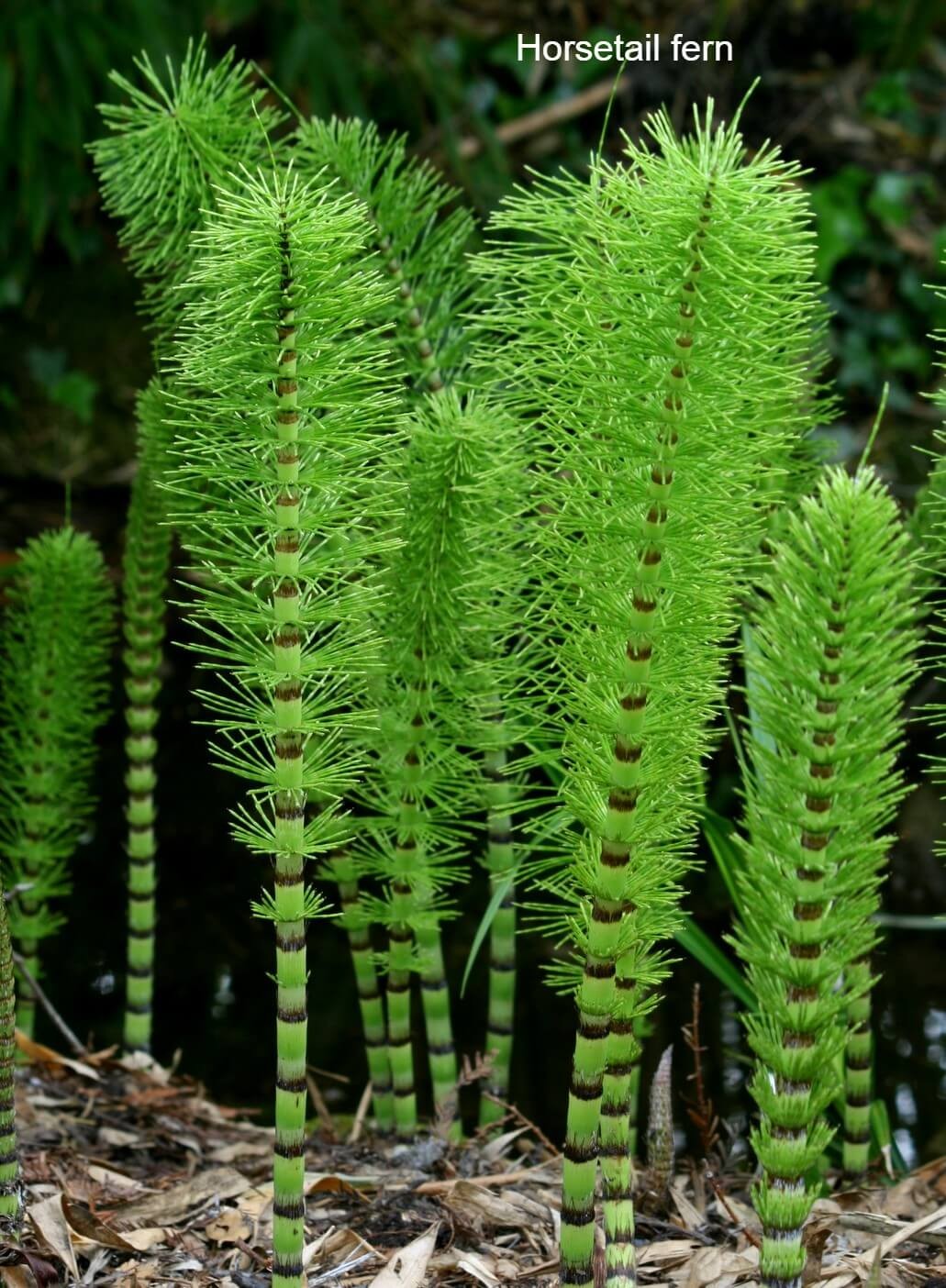
The Equisetum family’s last surviving species, despite its name, poses a threat when ingested by horses, making it a double-edged sword in terms of its identity. Its short-stalked stems exhibit a unique blend of bamboo and tall grass features, setting it apart from other ferns. This ancient type of fern, tracing back to the Paleozoic era, boasts an extraordinary ability to thrive in environments where most ferns would struggle to survive.
Cloverleaf fern:
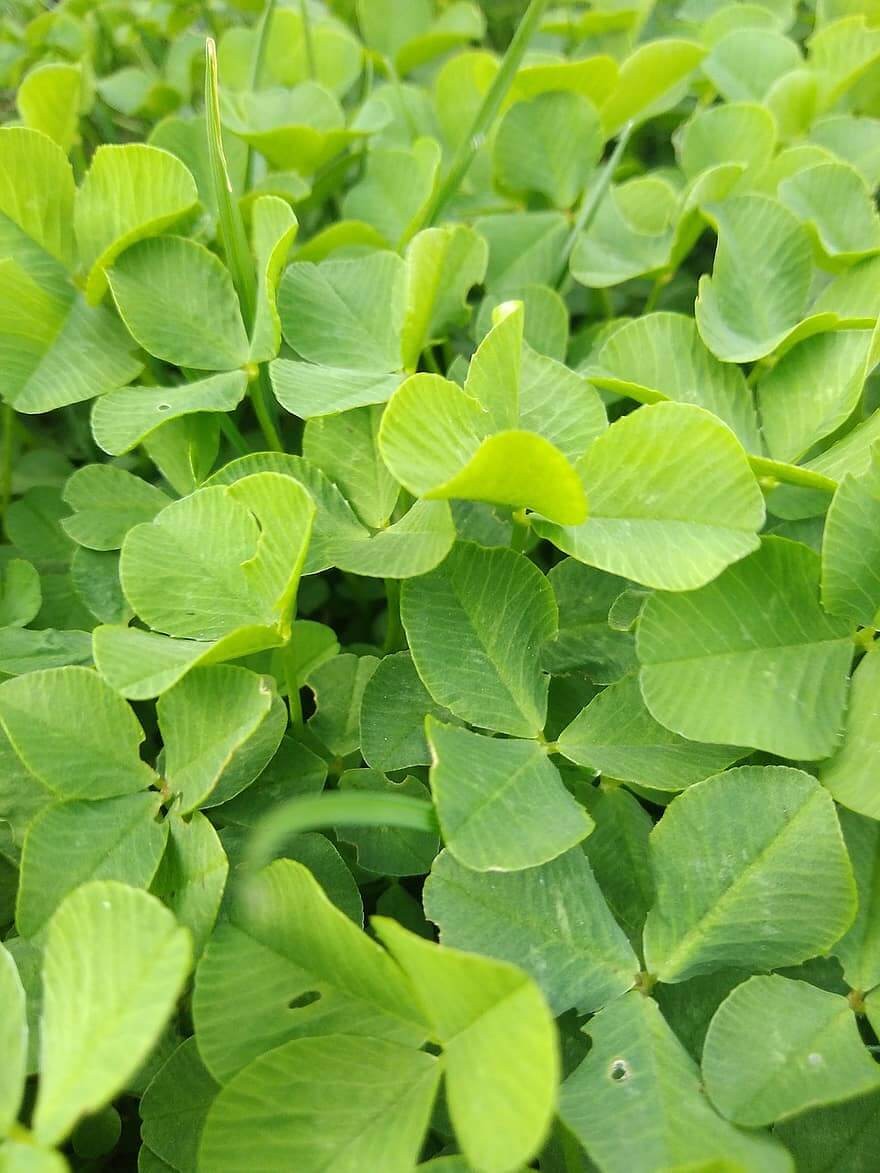
The four- to five-leaved maidenhair fern is a ubiquitous presence that has earned its place in folklore as a harbinger of good fortune. One of the few species of ferns considered complete plants, boasting roots, stems, and leaves, it’s an ideal choice for ground cover. The significance of this plant lies not only in its unique leaf structure but also in the mythology surrounding its discovery.
Finding one of these rare five-leafed specimens is said to bring good luck, making it a coveted find for many.
Ancient fern:
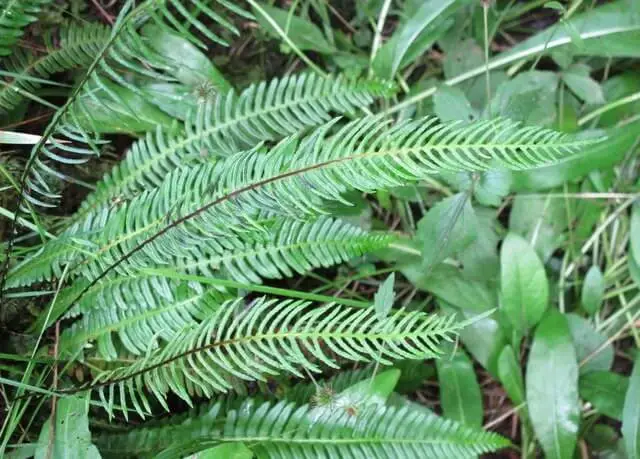
In many cases, ancient ferns are linked to tree ferns. As the mother plant of all cultivars, it is a species that has been around for millions of years, making it one of the oldest living plants on our planet. The distinctive fronds of this type of fern grow at the apex of a sturdy fibrous trunk, which sets them apart from other types of ferns.
A unique characteristic of ancient ferns is their ability to grow directly from the rootstock, unlike temperate ferns which have a different growth pattern. This adaptability makes it possible for these plants to thrive in indoor environments and even tolerate colder climates, making it an ideal choice for those who want to bring some greenery into their home.
Wire fern (lycophyte):
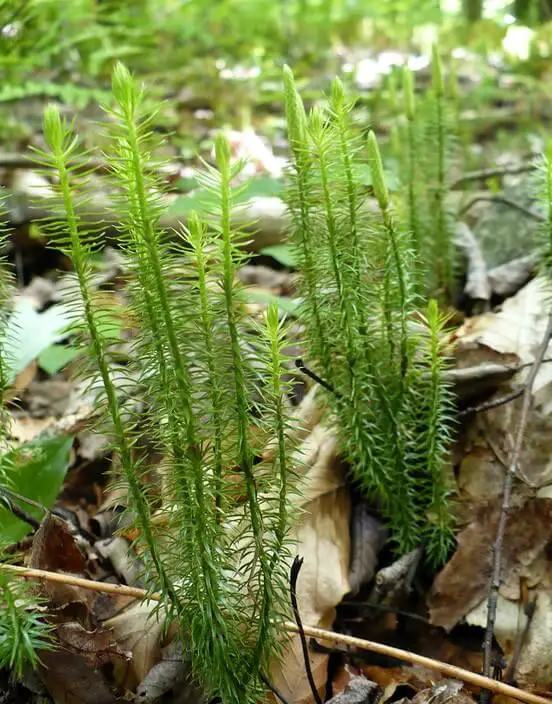
The distinctive fork-like shape of the stems and leaves makes it relatively simple to identify this type of fern ally. Despite being classified as lycophytes, they do not actually belong to the fern family. Characterized by single-veined, dark green foliage with a waxy texture, these plants are easily distinguished from true ferns.
Holly Fern/Japanese Holly Fern (Cyrtomium falcatum):
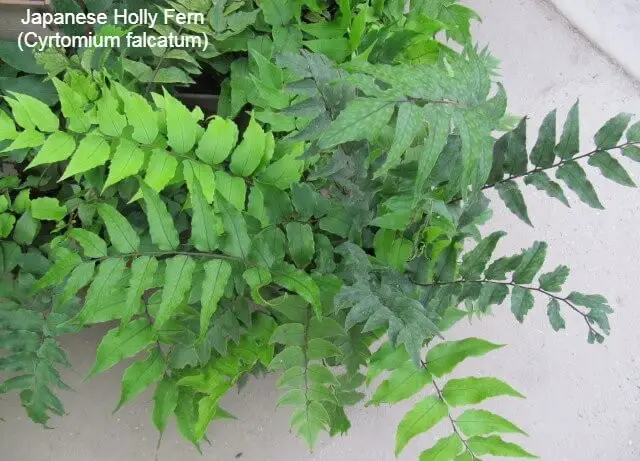
The ideal indoor fern for low-light spaces, this variety thrives in conditions that range from dimly lit to fully shaded environments. Its adaptability has made it a popular choice for zen-inspired garden designs. Native to East Asia, this species boasts impressive resilience to pests and deer, making it an excellent option for those seeking low-maintenance greenery.
Staghorn fern (Platycerium):
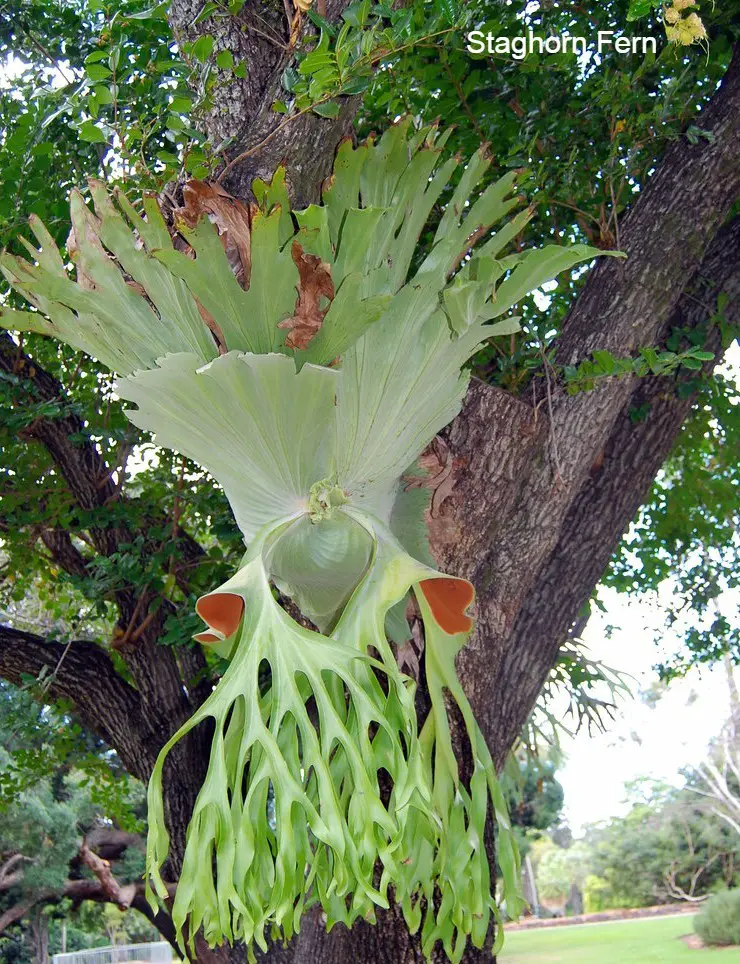
Ferns with a staghorn-like appearance earn their name due to the unique foliage, which mimics the shape of antlers. Interestingly, these epiphytes thrive in wood and plant environments rather than soil. They demand specific conditions: filtered light, high humidity, regular watering, and misting. As prized possessions in many homes, they’re often passed down through generations due to their reputation for longevity.
A general guide to caring for ferns indoors:
When it comes to caring for houseplants, including ferns, a gentle touch is often required. As with any living thing, handle them with care and make adjustments as they grow and develop.
To keep your ferns thriving, focus on three key areas: water, temperature, and lighting.
Watering is crucial, and it’s essential to ensure the pot drains properly. Water young ferns regularly, but be mindful of their specific needs.
Some ferns flourish in high-humidity environments, making bathrooms with showers an ideal spot for them.
Temperature-wise, a comfortable range for most ferns is around 20°C (70°F), which is suitable for indoor spaces.
Lighting is also vital, and it’s easy to overlook the importance of gentle illumination. Ferns need light, but direct sunlight can be detrimental. Be cautious not to expose them to harsh sunlight, as this can cause scorching.
Aquarium Fern Types:
In contrast to its terrestrial counterparts, this particular species thrives in aquatic environments. It’s not uncommon to find it growing partially submerged or entirely surrounded by water, often nestled among the gentle ripples of a lake or the soothing currents of a river.
Java fern (Microsorum pteropus, Leptochilus pteropus):
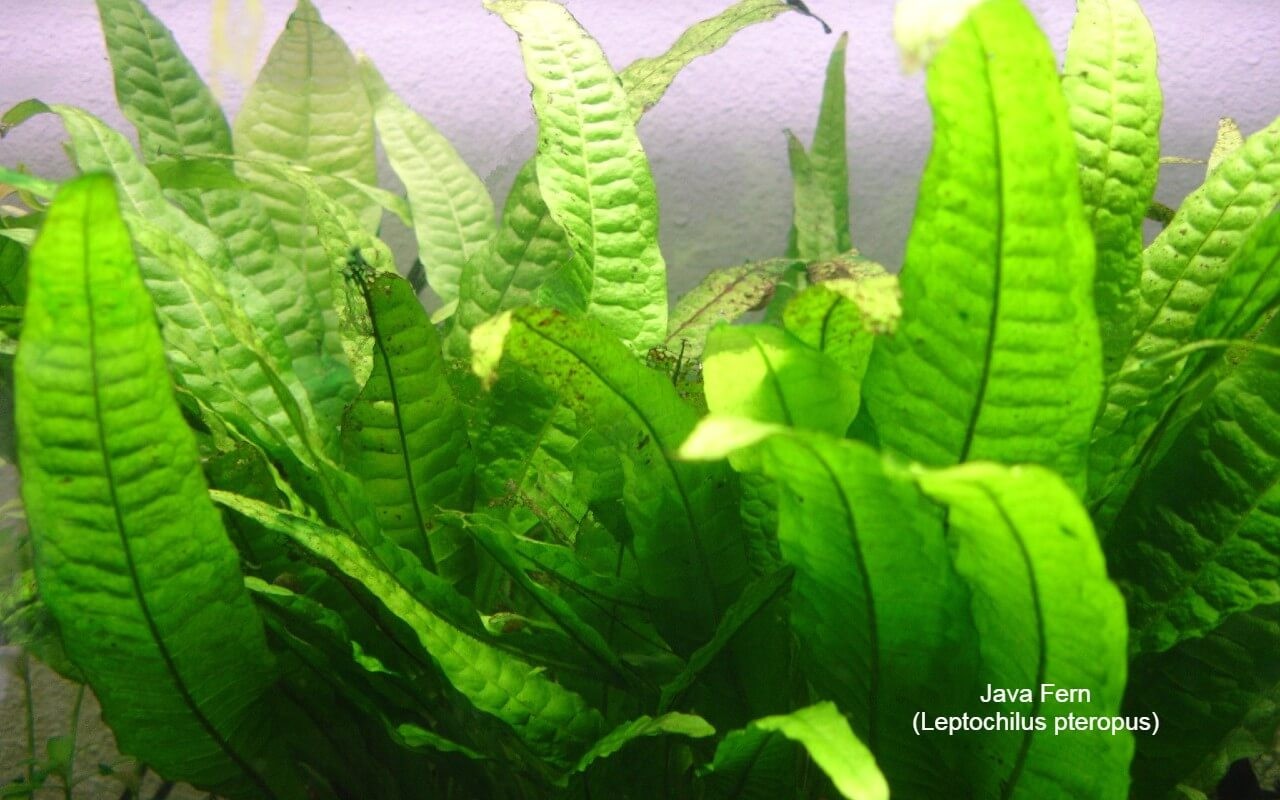
This unique fern species excels in its ability to thrive in water-based environments, making it a versatile option for indoor spaces. While often referred to as a houseplant, this aquatic fern requires an aquarium or water tank that is placed indoors. What’s more, this variety boasts three distinct leaf shapes – lancing, needle-like, and trident-shaped – allowing you to distinguish between them.
How to care for fern plant
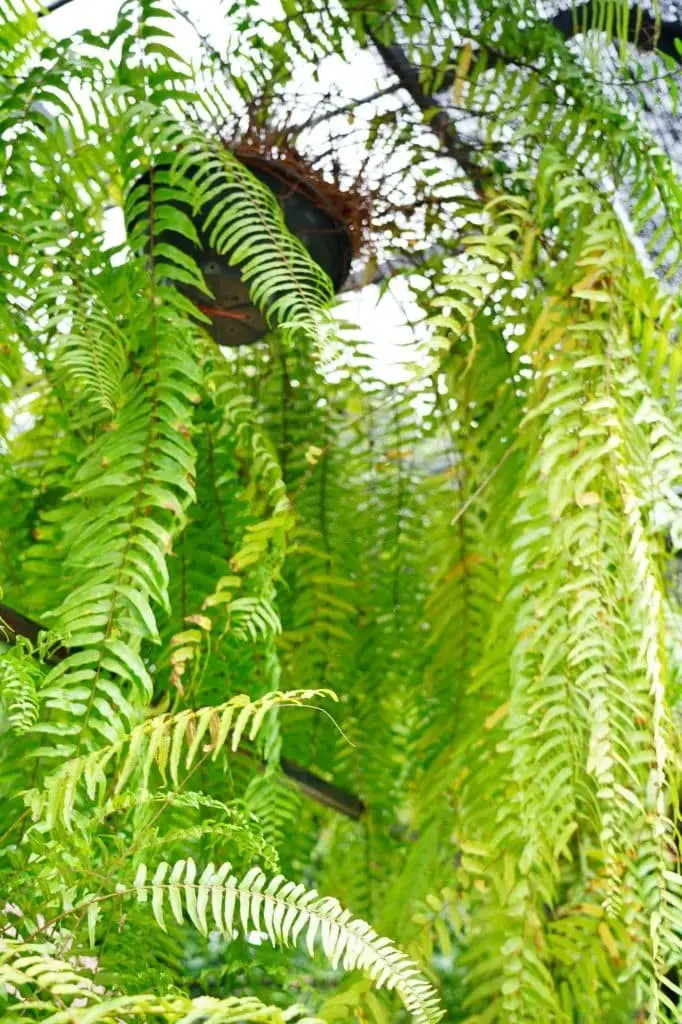
When it comes to growing ferns, whether indoors or outdoors, it’s crucial to understand that they require specific care. While many may think that caring for ferns is a daunting task, the truth is that there are only a few key things to keep in mind. Essentially, you just need to be mindful of three fundamental factors: humidity, temperature, and soil requirements. By taking these simple considerations into account, you’ll be well on your way to creating a thriving fern garden.
Humidity
When it comes to growing ferns, they thrive in environments with high levels of humidity. To replicate this condition indoors, it’s essential to maintain a humid atmosphere using air humidifiers. If your home is naturally too dry for your fern’s liking, don’t worry – there are some simple adjustments you can make to create the right conditions.
For instance, placing pebbles in the tray or giving the leaves a daily misting can help increase the moisture levels and keep your fern happy and healthy.
Temperature
When it comes to choosing a fern for your space, temperature plays a crucial role. Most ferns don’t do well in extremely cold conditions, but some are more adaptable than others. For tropical regions, most ferns thrive between 15-21 degrees Celsius, while those in temperate climates can survive at temperatures ranging from 10-16 degrees Celsius.
However, there are some exceptions to this rule – certain species of ferns, like the Japanese painted fern, can tolerate lower temperatures and are more cold-hardy than others.
Soil
Ferns thrive in a specific environment, where they can absorb optimal amounts of light and moisture from forest soils rich in organic matter. Crucial to their growth is the right compost that prevents waterlogging issues. If ideal humus-rich soil isn’t available, sandy alternatives can be used as long as mulch is added to ensure the plants receive sufficient nutrients.
Light
While discussing fern care, we’ve consistently emphasized their ability to flourish under a range of lighting conditions. Specifically, these plants excel in environments with low light, bright indirect light, and some species can even tolerate partial to full sun exposure. It’s crucial to consider the specific type of fern you’re working with, as each variety has its unique set of light requirements.
Fertilizer
Unlike many other plants, ferns are surprisingly adaptable and can thrive in a wide range of environments without the need for added fertilization. In fact, some species may even be negatively impacted by fertilizers, which can have devastating consequences. It’s essential to exercise caution when considering nutrient supplementation for your ferns, as excessive or inappropriate use could lead to harm or even mortality.
Pruning
Pruning your ferns may not be essential, but it can have a beneficial impact on their growth. By carefully cutting off any yellowed or deceased fronds during the fall and winter seasons, you’ll be creating an environment that fosters healthier, more robust fronds come springtime. This simple yet effective technique also serves as a means of monitoring soil moisture levels, allowing you to address any potential issues with soggy or waterlogged conditions.
Repotting
For optimal results, prune your ferns during the spring season, provided that the roots have begun to spread beyond their pots. This technique can also be applied to outdoor ferns, serving as a means to maintain control over their growth and prevent unwanted invasiveness within your garden.
Water
Water your ferns consistently to guarantee sufficient moisture reaches the soil. Only water when the top layer is parched, as excess watering can be detrimental. To further enhance moisture retention, consider misting the base of the plant and its leaves daily.
Conclusion
Ferns are a testament to their remarkable adaptability and resilience as a plant species. Their versatility allows them to thrive in various environments, from towering trees to lush ground cover and stunning indoor and outdoor displays. While some may view ferns as finicky, our exploration has dispelled this notion, revealing that with basic care knowledge, you can cultivate any type of fern at any time.
Moreover, the cold-hardiness of certain species means temperature restrictions are no longer a barrier. Ferns have earned their reputation as survivors, and for good reason – their ability to thrive in diverse conditions is a testament to their enduring success.
Related Posts
To embark on a career as a plant breeder, one must first grasp the fundamental principles. A step-by-step approach is crucial in understanding the intricacies of this profession. It begins with gaining knowledge about different plant species, their characteristics, and behaviors. This foundation enables individuals to develop new varieties by carefully selecting and crossing plants with desirable traits.
Furthermore, a strong understanding of genetics, botany, and horticulture is vital for successful breeding. Aspiring plant breeders can enhance their skills through internships, research, and hands-on experience. Additionally, staying updated on the latest scientific breakthroughs and industry trends can significantly improve one’s expertise. Ultimately, becoming a plant breeder requires dedication, passion, and a willingness to continuously learn and adapt.






